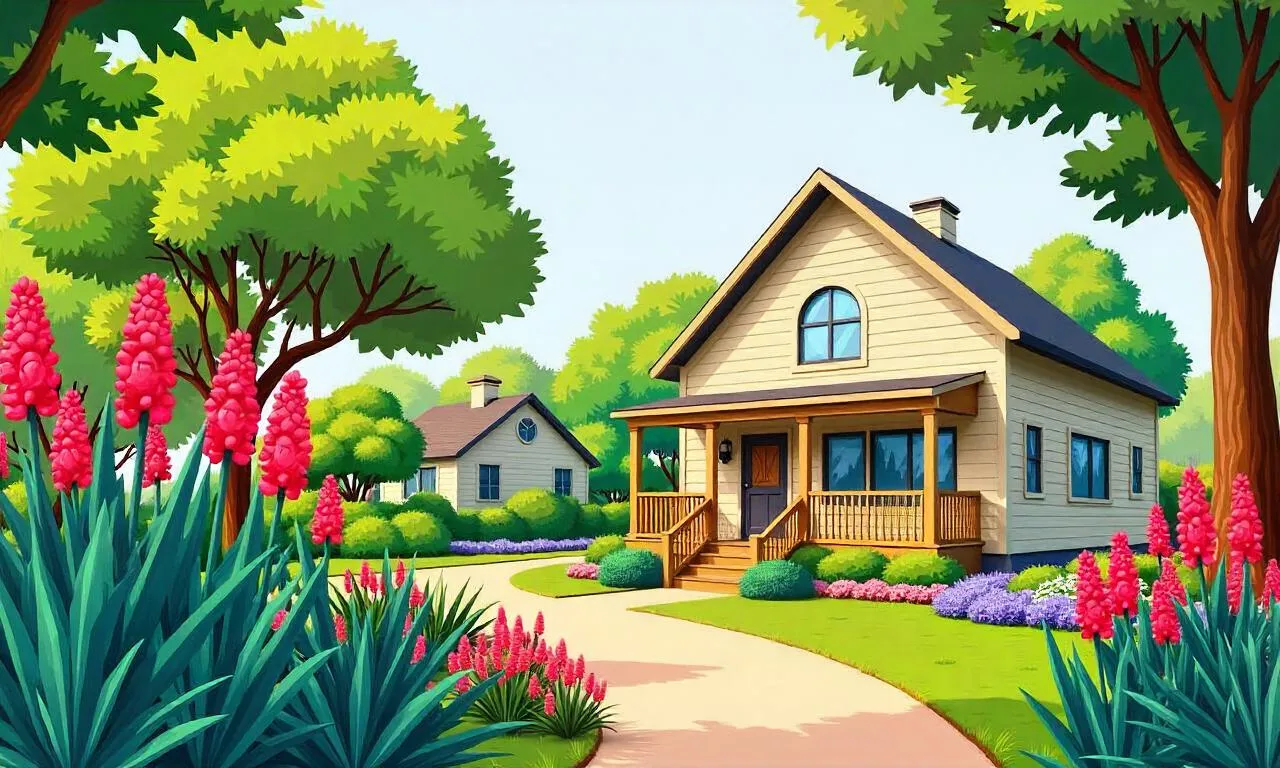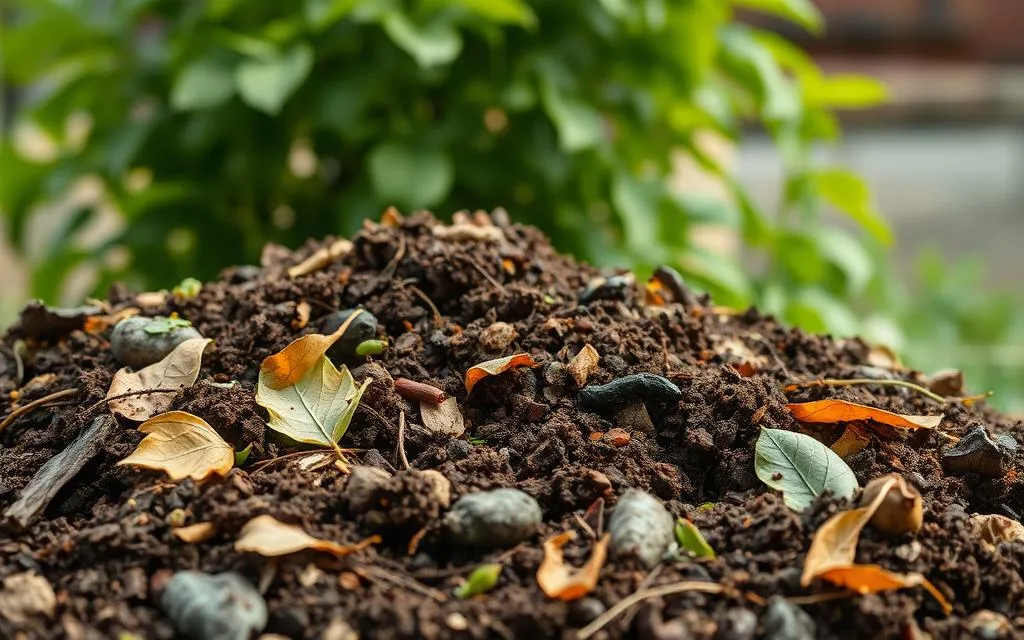Long term effects of soil erosion are a critical concern for environmental sustainability, agriculture, and human livelihoods. Over time, soil erosion not only degrades the land but also triggers a cascade of consequences that affect ecosystems, water resources, and even the global climate. This article delves into the long term effects of soil erosion, exploring its impact on the environment, agriculture, water quality, biodiversity, and economic stability. By understanding these effects, we can better appreciate the urgency of implementing effective mitigation strategies to preserve soil health and ensure long-term ecological balance.
Table of Contents
ToggleEnvironmental Impact of Soil Erosion
Soil erosion is one of the most pressing environmental challenges, with far-reaching consequences that extend beyond the immediate loss of topsoil. The long-term effects of soil erosion on ecosystems are profound, as it disrupts natural processes and weakens the foundation of life-supporting systems.
One of the most visible long-term effects of soil erosion is land degradation. As the top layer of soil—rich in organic matter and nutrients—disappears, the land becomes less productive and more prone to desertification. In regions where erosion is severe, the soil may transform into a barren landscape, incapable of supporting vegetation or sustaining wildlife. This degradation not only affects the aesthetics of the land but also reduces its ability to act as a carbon sink, exacerbating climate change.
The loss of topsoil is a particularly devastating outcome of soil erosion. Topsoil is the most fertile layer, containing essential nutrients and microorganisms that support plant growth. Over decades, repeated erosion can strip away this vital layer, leaving behind subsoil that is less conducive to agriculture and more difficult to replenish. This process leads to a decline in soil biodiversity, as the unique organisms that thrive in topsoil are displaced or destroyed. The consequences are not immediate; they unfold slowly, undermining the resilience of ecosystems and their ability to recover from disturbances.
1. Land Degradation and Desertification
Land degradation caused by soil erosion is a slow but irreversible process. In areas with high erosion rates, the land loses its ability to retain water and nutrients, leading to desertification. This phenomenon is particularly alarming in arid and semi-arid regions, where the soil is already fragile. Over time, the long term effects of soil erosion can transform once-fertile land into a desert, forcing communities to migrate or adapt to harsher conditions.
Desertification is not just a loss of land; it is a complex interaction of natural and human factors. Overgrazing, deforestation, and unsustainable farming practices accelerate erosion, making the land more vulnerable to extreme weather events. The long term effects of soil erosion in these areas include the loss of vegetation cover, reduced groundwater recharge, and increased salinity. For example, in the Sahel region of Africa, decades of erosion have led to the expansion of desert areas, threatening food security and water availability for millions.
| Region | Average Soil Erosion Rate (tons per hectare per year) | Agricultural Loss | Economic Cost (USD per hectare) |
|---|---|---|---|
| Sub-Saharan Africa | 20-50 | 30% of arable land lost | 1,200 |
| South Asia | 15-40 | 25% reduction in crop yields | 800 |
| North America | 10-30 | 10% soil fertility decline | 600 |
This table highlights the long term effects of soil erosion across different regions, illustrating how erosion rates, agricultural losses, and economic costs vary.
2. Loss of Soil Fertility and Nutrient Depletion
Soil erosion not only removes the top layer but also depletes the nutrients essential for plant growth. The long term effects of soil erosion include a gradual decline in soil fertility, as the most nutrient-rich particles are carried away by water or wind. This process, known as nutrient leaching, reduces the availability of phosphorus, potassium, and nitrogen, which are crucial for sustaining crops and natural vegetation.
Over time, the loss of nutrients can lead to a cycle of degradation. Without regular replenishment, the soil becomes less capable of supporting life, forcing farmers to rely on synthetic fertilizers to maintain productivity. However, this approach is unsustainable in the long run, as it increases chemical runoff and soil compaction. The long term effects of soil erosion also include changes in soil structure, making it harder for water to penetrate and for roots to establish. This creates a feedback loop that accelerates land degradation and reduces the land’s ability to recover.
Agricultural Consequences of Soil Erosion
The long term effects of soil erosion on agriculture are particularly severe, as they directly impact food production and the livelihoods of farming communities. Soil erosion reduces the productivity of farmland, leading to long-term economic and food security challenges.
One of the most immediate effects of soil erosion in agriculture is reduced crop yields. As the topsoil is lost, the soil’s ability to support plant growth diminishes. This is especially problematic in regions that depend heavily on subsistence farming, where even a small decline in productivity can have significant consequences. The long term effects of soil erosion include a decline in soil organic matter, which is critical for maintaining soil structure and fertility. Over time, this results in poorer water retention, increased erosion, and lower agricultural output.
1. Decreased Soil Productivity and Crop Yields
The long term effects of soil erosion on crop yields are cumulative, meaning they worsen over time as the soil continues to degrade. In areas with prolonged erosion, the soil becomes compacted and less aerated, making it difficult for roots to access nutrients and water. This leads to stunted plant growth and lower harvests, which can have ripple effects on food prices and availability.
Moreover, soil erosion can lead to the loss of soil biodiversity, as the microorganisms and organic matter that support plant health are carried away. This decline in biodiversity reduces the soil’s ability to cycle nutrients and support microbial activity, further diminishing its productivity. The long term effects of soil erosion also include increased reliance on fertilizers, which can lead to soil acidification and nutrient imbalances. Over decades, these factors can render farmland unproductive and economically unviable.
2. Economic Costs of Agricultural Loss
The long term effects of soil erosion in agriculture translate into substantial economic costs. Farmers may need to invest more in soil conservation techniques and irrigation systems to mitigate the damage, increasing production expenses. In addition, the loss of arable land reduces the potential for agricultural expansion, limiting food production capacity in already strained regions.
For example, in the United States, soil erosion has been estimated to cost $18.6 billion annually in agricultural losses. These costs include reduced crop yields, increased input requirements, and loss of farmland to non-agricultural uses. The long term effects of soil erosion also affect local economies, as communities that depend on farming may experience unemployment, poverty, and migration. In extreme cases, entire regions can become uninhabitable for agriculture, leading to food shortages and economic instability.
Water Quality Degradation
Soil erosion contributes to water quality degradation, as it increases sedimentation and pollution in water bodies. The long term effects of soil erosion on water resources are particularly concerning, as they can have lasting impacts on drinking water supplies, aquatic ecosystems, and hydrological cycles.
When soil erodes, it carries sediment, nutrients, and pollutants into rivers, lakes, and oceans. This process, known as sedimentation, can smother aquatic habitats, reduce water clarity, and disrupt the balance of ecosystems. Over time, the accumulation of sediment can alter riverbeds and floodplains, increasing the risk of flooding and reducing the storage capacity of reservoirs. The long term effects of soil erosion also include increased water treatment costs, as sediment and pollutants require more intensive filtration to ensure safe drinking water.
1. Sedimentation and Its Effects on Water Bodies
The long term effects of soil erosion are evident in sedimentation, which can transform water bodies into shallow, muddy reservoirs. In rivers and lakes, sediment buildup can reduce oxygen levels, affect aquatic life, and decrease the lifespan of infrastructure such as dams and levees. For instance, in the Mississippi River Basin, sedimentation from agricultural erosion has led to the formation of hypoxic zones, areas where oxygen levels drop to dangerous levels, threatening marine life and fish populations.
Sedimentation also affects coastal ecosystems, as eroded soil particles can clog estuaries and mangroves, which are vital for biodiversity and natural filtration. These ecosystems act as natural barriers against storm surges and carbon sinks, but their degradation due to long term effects of soil erosion weakens their ability to protect coastal areas. This has long-term implications for human settlements, fisheries, and recreational activities that rely on healthy water bodies.
2. Nutrient Runoff and Water Contamination
In addition to sedimentation, soil erosion leads to nutrient runoff, which pollutes water bodies with excess nitrogen and phosphorus. These nutrients can trigger algal blooms, depleting oxygen in the water and creating dead zones where aquatic life cannot survive. The long term effects of soil erosion on water quality include chronic nutrient imbalances, which can alter the composition of ecosystems and reduce their resilience to environmental stressors.

For example, agricultural runoff in the Gulf of Mexico has caused a massive dead zone that spans over 2,000 square kilometers. This dead zone is a direct result of long term effects of soil erosion in the surrounding agricultural areas, where fertilizer runoff has accumulated in the water. Over time, water contamination from erosion can impact drinking water sources, increase the cost of water treatment, and pose health risks to communities. The long term effects of soil erosion on water resources are a silent but significant threat to both environmental and human health.
Biodiversity Loss and Ecosystem Disruption
The long term effects of soil erosion extend to biodiversity loss, as it disrupts habitats and reduces the availability of resources for wildlife. Erosion not only affects soil health but also threatens the survival of plant and animal species, leading to long-term ecological imbalances.
Soil erosion can destroy the root systems of plants, reducing vegetation cover and exposing the soil to further erosion. This creates habitat fragmentation, which displaces animals and reduces their food sources. Over time, species decline occurs as populations become isolated and cannot adapt to changing conditions. The long term effects of soil erosion on biodiversity are particularly severe in forests and grasslands, where species diversity is highest.
1. Habitat Destruction and Species Decline
The long term effects of soil erosion lead to habitat destruction, as vegetation is stripped away and soil is lost to water or wind. In forests, this can result in soil erosion from deforestation, which damages the soil structure and reduces the ability of trees to anchor the soil. In grasslands, erosion can eliminate the root systems that stabilize the soil, leading to land degradation and loss of native plant species.
As habitats shrink, animal species face increased vulnerability to extinction. Soil erosion can also disrupt food chains, as primary producers such as grass and shrubs are the first to decline. This has long-term effects on biodiversity, as predators and herbivores lose their food sources and must adapt to new environments. In extreme cases, entire ecosystems can collapse, leading to loss of species diversity and reduced ecological services.
2. Effects on Ecosystem Services
Ecosystem services such as water filtration, carbon sequestration, and pollination are severely impacted by the long term effects of soil erosion. Soil acts as a natural filter, removing pollutants and sediments from water before it reaches rivers and lakes. When erosion strips away the topsoil, this filtration capacity is reduced, leading to increased water pollution.
Additionally, soil erosion affects carbon sequestration, as organic matter is lost and carbon stored in the soil is released into the atmosphere. This contributes to climate change and reduces the land’s ability to act as a carbon sink. The long term effects of soil erosion also disrupt pollination, as wildlife habitats are destroyed and plant populations decline, reducing the availability of pollinators such as bees and butterflies. These disruptions have long-term implications for biodiversity and ecosystem stability.
Economic and Social Impacts
The long term effects of soil erosion have economic and social consequences, affecting communities, industries, and global markets. Over time, the loss of productive land and increased environmental damage lead to higher costs for agriculture, infrastructure, and water management.
Soil erosion can increase the cost of food production, as farmers face higher input expenses to maintain soil fertility and crop yields. This leads to higher food prices, which affect both consumers and producers. In rural areas, where farming is the primary livelihood, the long term effects of soil erosion can trigger economic decline, poverty, and migration. The social impact of erosion is also significant, as communities are forced to adapt or seek alternative income sources.
1. Costs to Agriculture and Food Security
The long term effects of soil erosion on agriculture are not limited to reduced crop yields; they also increase the cost of inputs such as fertilizers, irrigation, and machinery. As soil fertility declines, farmers may need to apply more chemicals to compensate, which can lead to soil acidification and long-term damage to the land. This economic burden is especially heavy in developing countries, where limited resources are already strained.
Furthermore, soil erosion can threaten food security, as arable land is lost to desertification and degradation. In regions where soil erosion is rampant, local food production may decline, leading to increased dependence on imported goods. This not only raises costs but also creates vulnerabilities in the food supply chain. The long term effects of soil erosion on food security are cumulative, meaning that even small losses over time can have significant consequences for global food systems.
2. Infrastructure Damage and Long-Term Costs
The long term effects of soil erosion also damage infrastructure, as erosion leads to soil instability and increased risk of landslides and flooding. Roads, buildings, and irrigation systems may require frequent repairs, which add to the economic cost of land development. For example, erosion in mountainous regions can undermine the foundations of structures, leading to long-term damage and increased maintenance expenses.
In addition to direct costs, soil erosion can affect the long-term value of land, reducing its suitability for development or investment. This economic impact is particularly significant in urban areas, where soil erosion from construction and deforestation can compromise the stability of infrastructure. The long term effects of soil erosion also increase the risk of disasters, such as floods and landslides, which can displace communities and disrupt economic activities.
FAQ Section
Q: What are the primary causes of soil erosion?
A: Soil erosion is caused by natural factors such as rainfall, wind, and freezing and thawing of the soil. However, human activities like deforestation, overgrazing, and unsustainable farming accelerate the process. These activities remove vegetation cover, expose the soil to erosion, and deplete natural resources.
Q: How does soil erosion affect agricultural productivity?
A: The long term effects of soil erosion on agriculture include reduced soil fertility, increased sedimentation, and loss of organic matter. Over time, this leads to lower crop yields, higher input costs, and increased reliance on synthetic fertilizers. The cumulative impact of erosion can make farmland economically unviable.
Q: Can soil erosion contribute to climate change?
A: Yes, the long term effects of soil erosion include carbon sequestration loss, as organic matter is removed from the soil and released into the atmosphere. This increases greenhouse gas emissions and reduces the land’s ability to act as a carbon sink. Over decades, soil erosion can amplify climate change impacts, creating a feedback loop that worsens environmental conditions.
Q: What are the long-term economic consequences of soil erosion?
A: The long term effects of soil erosion lead to higher costs for food production, infrastructure damage, and loss of land value. These factors can reduce economic stability in agricultural and urban regions, increase unemployment, and force communities to migrate. The cumulative economic impact of erosion is significant and long-lasting.
Q: How can communities mitigate the long-term effects of soil erosion?
A: Communities can implement sustainable land management practices such as contour farming, crop rotation, and agroforestry. Additionally, replanting vegetation, building terraces, and using erosion control structures can reduce soil loss. Education and policy changes are also essential to address the root causes of erosion and promote long-term environmental resilience.
Conclusion
The long term effects of soil erosion are multifaceted, affecting environmental health, agricultural productivity, water quality, biodiversity, and economic stability. As erosion continues unchecked, its cumulative impact on ecosystems and human societies becomes more pronounced. From land degradation and nutrient depletion to infrastructure damage and biodiversity loss, the consequences of soil erosion are far-reaching and inevitable without intervention.
By understanding these effects, individuals, communities, and governments can take proactive steps to prevent further damage and restore soil health. Strategies such as soil conservation, sustainable agriculture, and reforestation are essential in mitigating the long-term effects of soil erosion. In a world where soil resources are finite, preserving soil quality is not just an environmental concern but a crucial step toward long-term sustainability.
Summary
Understanding the long term effects of soil erosion is vital for addressing its impact on ecosystems, agriculture, and economies. Over time, erosion leads to land degradation, nutrient depletion, and biodiversity loss, threatening food security, water quality, and infrastructure. The cumulative consequences of erosion are irreversible, requiring proactive mitigation strategies such as soil conservation practices and sustainable land management. By prioritizing long-term solutions, we can protect soil resources and ensure environmental resilience for future generations.

















